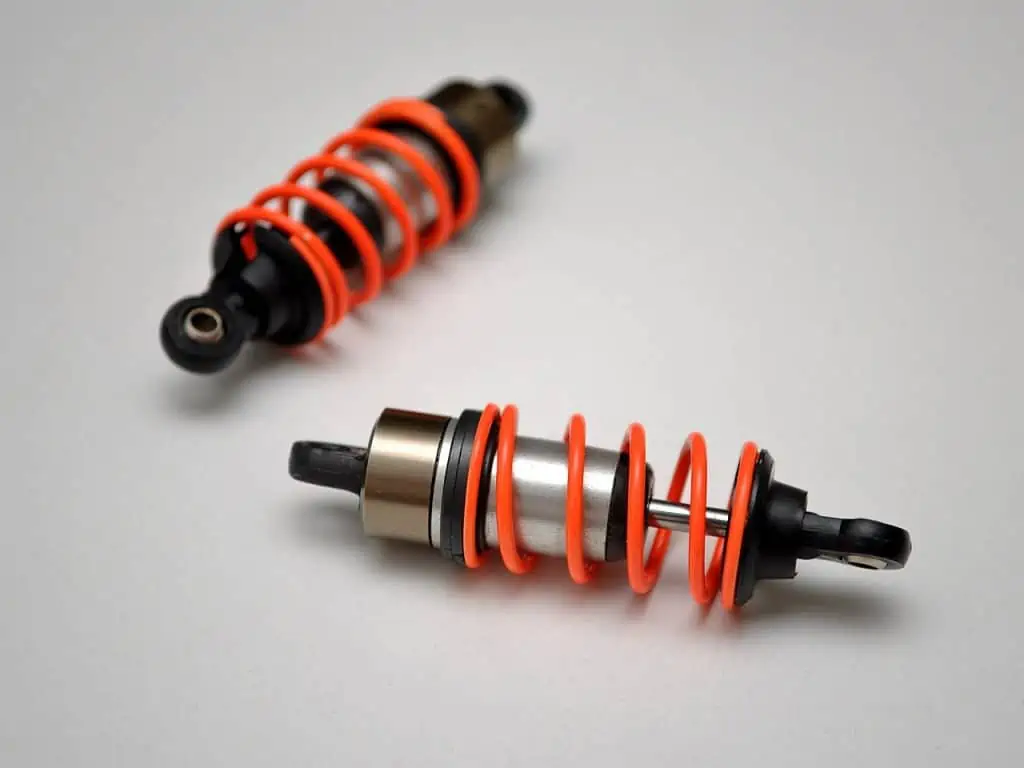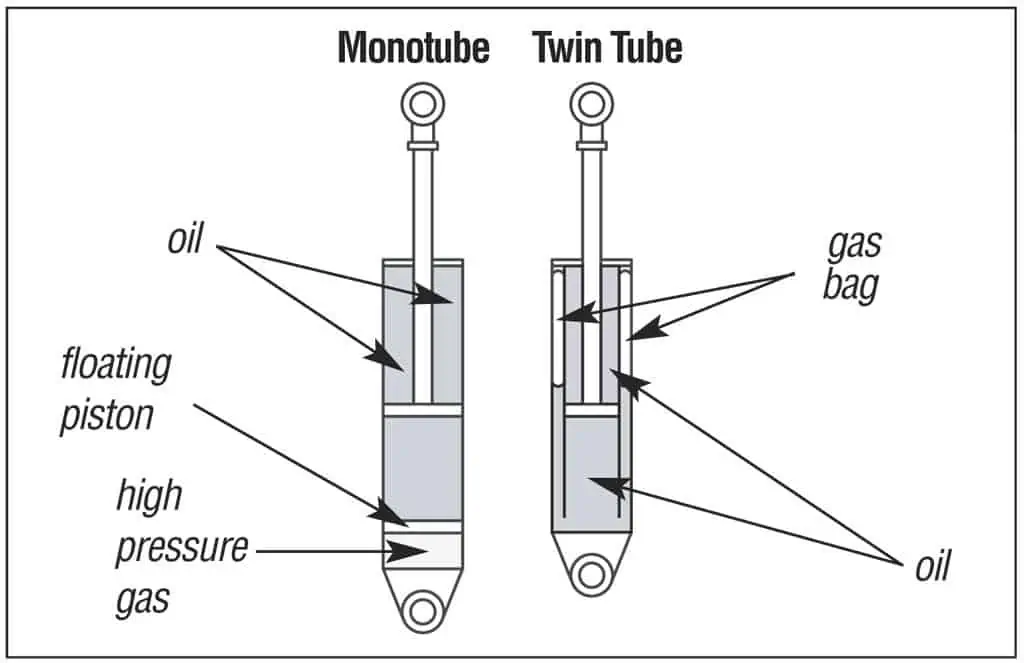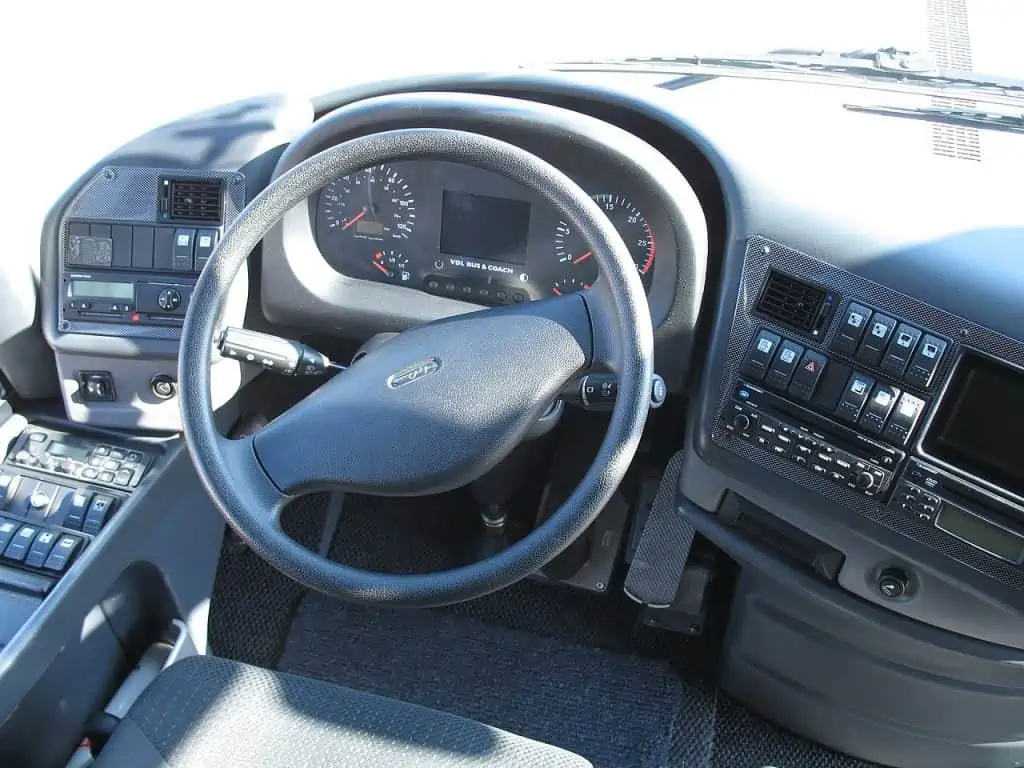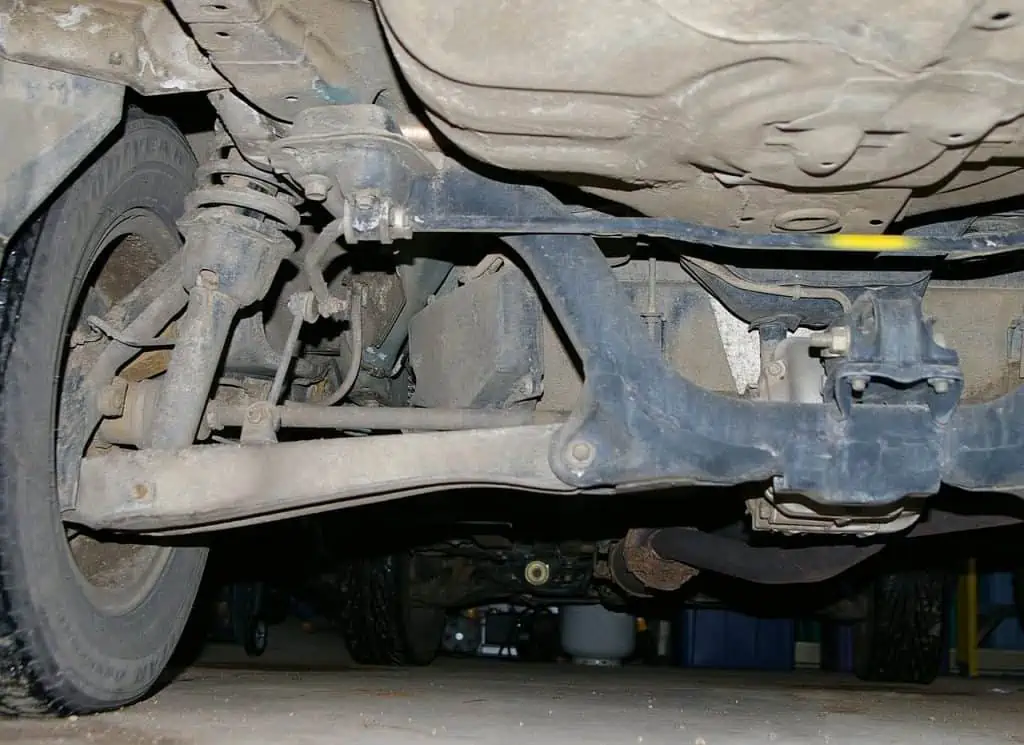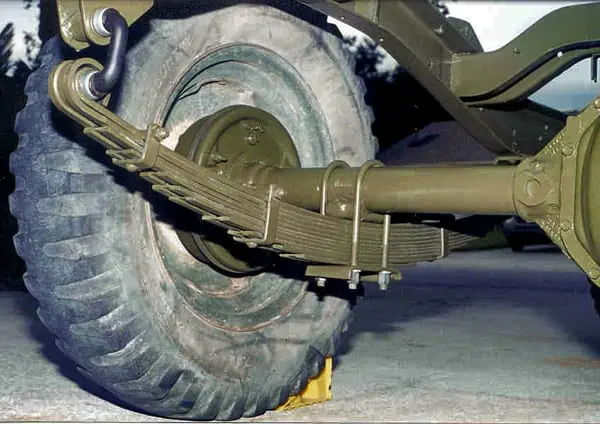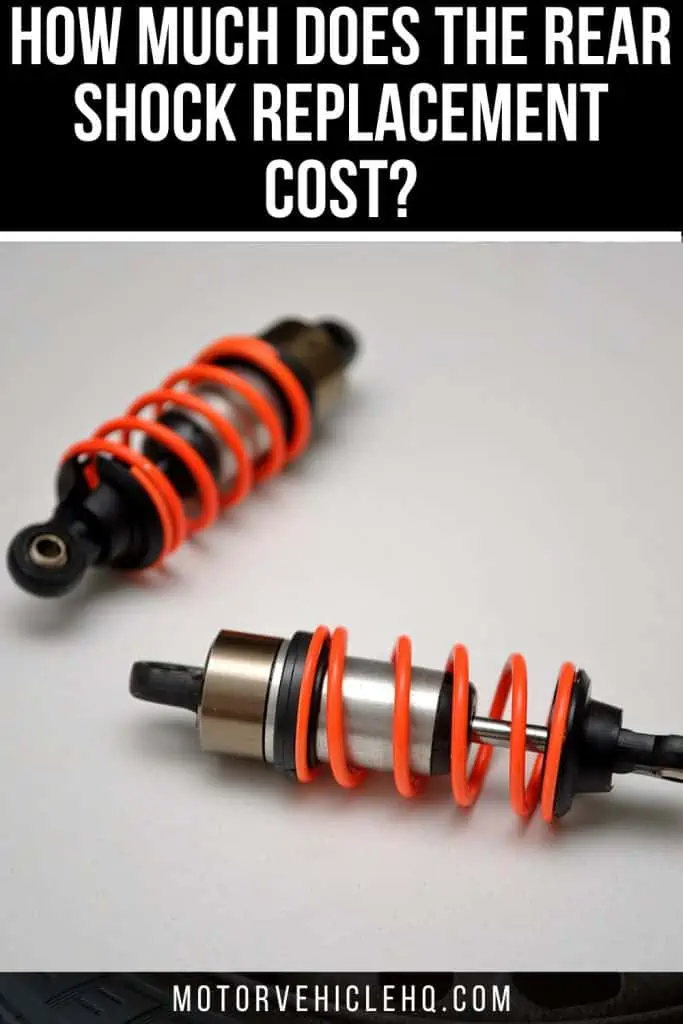Shocks allow for the smooth ride that drivers demand in their automobiles. They work effectively in tandem with the vehicle’s suspension and lessen the effects of outside factors on the automobile.
The signs of damaged shocks and struts point to the necessity of taking prompt action. In this post, we’ll discuss the need for shocks and the expense of replacing them.
Due to frequent usage, these components quickly deteriorate, and road imperfections like potholes and bumps make this considerably worse. Driving a car with worn-out shocks and bad shock symptoms would result in a horrible ride.
Many drivers, however, are not aware that their struts and shocks are worn until they experience terrible shocks. The indicators are obvious since shocks and struts maintain the automobile suspension securely fastened.
Therefore, even if not immediately, the loss of a fully functional strut or shock would affect the vehicle. You can soon feel some vibration and less traction as a result of the degraded strut and shock. Therefore, it is essential to take into account the rear shocks replacement cost.
Rear Shocks: What are They?
First things first: We want to make it clear that not all automobiles are equipped with rear shocks. Because every vehicle’s suspension system is unique, it is easier to understand why some vehicles have rear shocks and others have not.
However, if your automobile has them, they are crucial to the general health of your vehicle. They are in charge of assisting in the management of your car’s springs and regulating the range of motion of your suspension as a whole.
You’ll feel every tiny bump in the road if your suspension system doesn’t include completely functional rear shocks. You’ll notice it if your rear shocks aren’t functioning properly whether you’re traveling straight over a smooth road or turning around a rocky route.
Miniature oil-filled Coilover shock components for scale cars by Avsar Aras / CC BY-SA 3.0. It might be challenging to forecast how long rear shocks will last before failing. Because the cost of replacing the rear shocks varies on so many various factors, budgeting for it can be challenging.
Your car’s rear shocks keep it always stable and stop it from bouncing, as it would if they weren’t there.
This necessitates, as you might expect, that you take special care of your car’s rear shocks and replace them as required. Although the rear shocks replacement cost won’t be especially inexpensive, it will be essential to keeping your automobile functioning properly.
If you don’t take the proper steps to maintain your shocks, you might endanger other parts of your suspension system and your automobile as a whole.
What Distinguishes Rear Shocks from Struts?
We hinted at the significance of your car’s struts earlier. They are yet another crucial component of the suspension system of your automobile. But regrettably, some individuals mistakenly believe that shocks and struts are interchangeable.
Nothing could be further from the truth than this. To avoid confusing the two, you should be aware of their distinctions.
Your car’s struts are in charge of bearing the weight of the vehicle. Your shocks are not relied upon to perform this. In addition, your struts play a crucial part in your car’s steering system, something your shocks are unable to achieve.
To steady your automobile and all of the weight that comes with it when you make a turn, your struts are built to pivot as you turn your steering wheel.
Not all of your vehicle’s available weight can be supported by shocks. Instead, they continue to operate following your suspension system. They regulate the springs in this system, which dampens the weight of your car as it rolls up and down the road.
While they do collaborate with the struts in your automobile, shocks don’t provide the same function as struts as you’re moving down the road. They don’t always lose strength at the same pace as struts do because of this.
Rear Shocks: How Do They Work?
It’s not that tough to comprehend how shocks function inside the framework of your suspension system, despite the complexity that might occasionally surround them.
The majority of the time, coil springs that are wrapped around your rear shocks support and absorb the weight of your automobile when it is in motion. Your car’s rear shocks will kick in to help lessen the stress on the coil springs if the weight becomes too high for them to bear.
These coil springs are in the middle, and your rear shocks are located there, absorbing any vibrations that are sent to them. They lessen the amount of movement you experience when you hit a pothole, go over a speed bump, or just become stopped on a particularly rough road by doing. Additionally, they give your automobile stability that it would not otherwise have if your rear shocks weren’t in place.
Over time, rear shocks can sustain significant damage and still function. But ultimately, when your shocks break, you will have to pay the rear shocks replacement cost.
They won’t last you forever, especially if you often travel over rocky terrain or treat them to too many potholes. You’ll be responsible for limiting the abuse they endure when you’re operating your vehicle.
It won’t be difficult to tell if the rear shocks on your automobile are starting to break. You will be made aware of the need to replace your rear shocks as soon as possible and pay the related costs by certain telltale indicators.
Rear Shocks: How Long Do They Last?
How long rear shocks will endure before breaking down is not always easy to predict. Budgeting for the rear shocks replacement cost can be difficult because it depends on many different aspects.
Rear shocks should last between 50,000 and 100,000 miles on average before needing to be changed, however individual circumstances can greatly affect this.
You may be able to prolong the life of your rear shocks and avoid the rear shocks replacement cost if you don’t drive over too many bumps on the road.
If so, you might be able to avoid changing your rear shocks for the duration of the life of your vehicle. However, if you have a reputation for treating your car like an off-roader, it won’t be long before you need to spend money on new rear shocks.
In either case, it’s usually always a good idea to replace rear shocks in pairs to provide even wear and the necessary safety for your automobile. When it comes to making sure that your automobile is comfortable for you to drive, it can cost you extra to replace them in this manner.
What Symptoms Indicate Faulty Rear Shocks?
It won’t be difficult to determine whether your car’s rear shocks are beginning to fail. Certain telltale symptoms will alert you to the necessity to repair your rear shocks as soon as possible and pay the associated rear shocks replacement cost. When you know what to look for, it shouldn’t be too difficult to identify them.
To begin with, noisy rear shocks will frequently be present while you drive your automobile. In any case, if these noises suddenly appear, you shouldn’t dismiss them. Other indicators of defective rear shocks include:
1. The Car Nose Dives During Braking
Do you experience a sudden drop in the front of your automobile when you use the brakes? The nose dive motion is a sign of worn shocks and struts. It is risky since it can result in a longer stopping distance.
2. Car Experiences a Bumpy Ride
If your car bounces a lot when you hit a bump, your shocks and struts may not be functioning properly. When your car hits a bump, it should settle and not bounce again. Shocks and struts that are worn out can’t efficiently absorb hits from the road and smooth out the bump.
3. When Turning, the Car Rolls or Sways
It is uncomfortable to feel as though you are not in control of your car when you sense that your car is swaying or rolling when making a turn. A greater amount of steering effort may be required to traverse turns as a result of shocks losing their capacity to control the pace of weight transfer when turning.
4. Car Tires Wear Unevenly
The road-holding force of your vehicle decreases when the rear shocks are worn out, causing the car to bounce. Additionally, this bouncing may speed up tire degradation, resulting in cupping or scalloping of the tires. In this case, you can visually see pieces of rubber gouged out of the tire.
Your automobile bounces when the rear shocks are worn out because your car has less road-holding force. Furthermore, this bouncing can hasten tire deterioration, which would cause cupping or scalloping of the tires. In this instance, you can see rubber fragments that have been carved out of the tire.
You could observe that the tread is cupping. If identified early enough, a shock replacement and tire rotation might resolve the issue. If you allow the issue to continue, you’ll also need to buy new tires in addition to the shocks.
5. During Acceleration, the Rear of the Car Squats
When accelerating, suspension movement is stabilized by properly working shocks and struts. When you press on the gas pedal, a car’s rear end may squat excessively if its shocks and struts are failing.
The transfer of the vehicle’s energy to the back leads the front end to rise, which contributes to motion sickness in passengers and an unduly high loading of the rear suspension components.
6. The Steering Wheel Vibrates
When traveling on a rough road, it is normal to feel some vibration in your steering wheel. Similar sensations on flat surfaces might indicate damaged shock absorbers, struts, or steering stabilizers.
It would be stupid to suppose that when the suspension is failing, you won’t experience any of these issues through the steering system. You will undoubtedly feel something happening in the wheel as you cope with more bumps and swerving caused by the poor shocks.
You can experience increased steering-wheel vibration when you travel over rough terrain. This may be normal, however, it is not typical when you experience vibrations on smooth road conditions.
It’s necessary to get the car thoroughly evaluated if that occurs or if the vibrations get worse when traveling along the highway. If this is something that interests you more, we suggest reading our entire essay on the issue.
7. Car Produces Weird Sounds
You could hear a clunking or banging noise when rear shocks and struts are worn out. Upon the shock or strut bottoms out when encountering a bump, metal-to-metal contact results, which produces this sound. Additionally, worn shock or strut mounting components may be the cause of these sounds.
8. Shocks with Fluid Leaks on the Outside
The excessive hydraulic fluid leakage from your shocks or struts may be a symptom that needs to be replaced. The fluid required for your shocks and struts to operate properly is escaping if the seals break.
9. Car Ride Feels Uncomfortable
Driving with faulty shocks may have a significant impact on the ride in several ways. The unsteadiness is the first issue, particularly when the automobile is attacked by the wind. Check the suspension, especially the shocks, if you notice that you are correcting the car more frequently.
The car may also ratchet, rock, or shake due to worn shocks. While experiencing some of these things while hitting significant bumps is natural, poor shocks can cause the same sensation even when driving over very minor flaws.
Shocks are required to regulate the force with which a bump is struck. This makes driving uncomfortable and increases your risk of losing control of the vehicle.
A car steering wheel by Lukas 3z / CC BY-SA 4.0. When you drive over difficult terrain, the steering wheel may vibrate more. While experiencing vibrations on a smooth road may be natural, it is not usual. If that happens or if the vibrations become stronger while driving down the highway, the automobile has to be properly examined.
When applying the brakes, you’ll also notice a shift in how the vehicle handles. The vehicle can begin to veer or dip. Overall, this might make stopping the car after pressing the pedal a little more difficult and perhaps unsafe. If you are driving in slippery conditions, where effective braking is required, this is much more of an issue.
NOTE: Generally speaking, if your automobile isn’t as comfy as it once was, its suspension system is probably malfunctioning. The expense of repairing your rear shocks may need to be budgeted for soon, or you may need to consider changing another component of your system. It’s crucial to investigate this matter immediately.
Should You Keep Operating a Vehicle with Faulty Rear Shocks?
You might be able to continue driving your automobile without too much concern when the rear shocks on it initially start to fail. However, it won’t be long until you start to feel every bump on the road, which will be quite uncomfortable for you and your passengers in the car.
Additionally, you may discover that your automobile is a little trickier to manage than usual since faulty rear shocks can alter how your car steers.
If you don’t pay the rear shocks replacement cost and have new shocks fitted in your automobile, other, more catastrophic problems might arise. Your tires can sustain permanent damage.
At some time, you could also fully lose control of your vehicle, which might result in a rollover. For these reasons, you shouldn’t put off rear shocks replacement any longer than necessary.
Who Should You Engage to Perform Your Rear Shocks Replacement?
If your car’s rear shocks need to be replaced, you may be considering trying to repair it yourself to save money. If you don’t have any prior expertise working on autos, this is never a smart idea. You should bring an ASE-certified technician to assist you with it instead.
Even though this will increase the rear shocks replacement cost, it will ultimately turn out to be worthwhile.
A skilled mechanic can quickly lift your automobile off the ground, remove the damaged rear shocks, and install the new rear shocks. Additionally, they can ensure that the installation of your new rear shocks is done correctly to avoid harming other components of your suspension system.
What Does the Rear Shocks Replacement Cost Entail?
As we briefly discussed before, you’ll need to budget a sizeable sum of money for the rear shocks replacement cost when you need to have it done. It’s not among the cheapest vehicle repairs available.
Nevertheless, you shouldn’t allow it to prevent you from changing the rear shocks when the time comes.
Rear shock replacement will typically cost you between $1,000 and $1,130. Additionally, people seeking a bargain have very little space for a maneuver.
The majority of the cost of rear shocks replacement is made up of the parts, which are estimated to be roughly $900. Replacement of the rear shocks often just requires $200 or so in labor.
Rear independent suspension on an AWD car by Hustvedt / CC BY-SA 3.0. When you replace the rear shocks, you may also need to make a few small adjustments to the suspension system. This may make it more expensive than it currently is and make you wonder if it would be wise to move forward.
When you replace the rear shocks, your suspension system likely has to have a few other minor repairs made as well. This can increase the price over what it already is and prompt you to consider whether it is worthwhile to proceed.
What Factors Impact the Rear Shocks Replacement Cost?
The cost to replace the rear shocks in your automobile will probably depend on the following criteria. They consist of;
1. Model or Make of the Vehicle
Depending on the vehicle you drive, you may anticipate a modest price variance for the majority of auto parts. The shocks in your smaller car will be less expensive than those in an off-road vehicle or a big SUV.
Additionally, the parts may be more expensive if you drive a premium model or a vehicle that requires high-performance shocks. Thankfully, there isn’t a huge disparity in the costs of different shocks.
2. The Brand of Shocks Needed
One auto component that is provided by several manufacturers is the shocks. Choosing between OEM and aftermarket shocks is only one option. If you want to save some money, you can buy inexpensive shocks, but the performance won’t be the same.
You could opt to use shocks from a reputable manufacturer, such as KYB, Monroe, or Bilstein. All of them are worthwhile investments and offer warranty coverage for further value.
3. Professional vs. DIY Installation
Like with any auto repair, you may spend far less money if you do the job in your garage. You can do the task in a few hours with the appropriate equipment and a reasonable level of experience.
Be picky about where you go if you decide to have a professional finish the replacement. You may save a lot of money over a dealership by selecting a nearby auto repair company. Simply check to see if the business is trustworthy.
4. Any Other Added Services
You don’t need to worry as much about faulty shocks as you do about bad struts. However, other suspension components are also worn at the same time, so it only makes sense to repair them while you’re there.
Additionally, if the shocks were used while damaged, you could require new tires. But unlike with strut replacement, you shouldn’t require a wheel alignment. Only if you had new tires would this be required.
How Will the Rear Shock Replacement Be Done?
The replacement of one set of shocks typically takes two to three hours. Minor activities, like changing a spring, could, however, go more quickly. Finishing the refurbishment of the suspension may take a while. The following are the steps:
Pneumatic spring on a semitrailer by Bongoman / CC BY-SA 3.0. The rear shocks are situated in the center of coil springs, and they’re responsible for absorbing any vibrations that are transmitted to them. When you hit a pothole, cross a speed bump, or just come to a halt on a very bad road, they reduce the amount of movement you feel by doing.
- A “bounce” test will be carried out, and the rear shock absorbers will be evaluated.
- If new shock absorbers are required, the old ones will be detached and discarded when the wheels are taken off.
- New shock absorbers will be installed when the wear and damage to the suspension and steering components are assessed.
- The wheels will be changed, and the car will be inspected to guarantee good running.
Can I Carry Out the Rear Shocks Replacement On My Own?
You must be a knowledgeable and experienced home mechanic if you wish to change your rear shock absorbers yourself:
- When you park your car on a flat or level surface, place chocks or wedges beneath the wheels that will remain on the ground.
- Jack up the automobile and lift the troublesome wheel as high as you can.
- Place jack stands beneath the factory lift point and then lower the car onto them. You should have enough room to work on the automobile as a result.
- You can relieve some pressure by jacking up the suspension you’ll be working on. Replace one side of the shocks at a time if you’re replacing both sides.
- The shock mounting bolts should be removed using a socket or wrench of the proper size.
- Now you should be able to take out the broken shock absorber from your car.
- Replace both the broken fastening screws and the defective shock with new ones.
- If the shocker is difficult to install, you might need to make a little modification to the bracket. If required, move them slightly to ensure the appropriate operation of your new shocks. Use the necessary tension while tying down the mounting bolts.
- Your car should be lowered to the ground when you remove the floor jack from underneath it.
- Take the chocks off and take your car for a test drive.
Is The Rear Shocks Replacement Cost Worth Incurring?
Your car’s rear shocks will need to be replaced, and that will set you back a fair amount of cash. This can prompt you to consider if it is worthwhile to pay for this to be done. Before deciding to carry out the rear shocks replacement, you should give this question some thought.
The answer to the question we just presented should be obvious if you want to maintain your automobile for at least a few more years. Rear shocks cannot be used while driving for a prolonged amount of time. You will be forced to cover the rear shocks replacement cost.
However, taking on the rear shocks replacement cost might not be in your best interests if your automobile isn’t worth much money and doesn’t have a lot of life remaining in it.
Selling your automobile can be a better option than attempting to replace such pricey items. Not everyone will find the rear shocks replacement cost to be worthwhile.
Coil springs that are wrapped around your rear shocks often support and absorb the weight of your car when it is moving. If the weight gets too much for the coil springs to support, your rear shocks will engage to assist reduce the strain on the springs.
A Mechanic’s Rear Shocks Replacement Advice
- Shock absorbers should never be replaced individually; doing so will prevent vehicle handling from remaining stable and predictable.
- Stopping distances may lengthen, especially in wet or slick conditions, if your rear shock absorbers are worn out or leaking. This can also cause other suspension and steering parts to wear out more quickly or unevenly, and your tires to degrade more quickly.
- The “bounce” test is an easy technique to determine whether your rear shock absorbers need to be replaced. It is simple to pass this test. After releasing a corner, if your car still bounces, your shock absorbers may not be working correctly and may need to be replaced.
- Always replace both shocks on one axle rather than just one, as recommended. Your car’s stability may be impacted by replacing one, and in some situations, it may become unsafe.
- Rear shocks are typically easier to replace than front shocks. This is because front shocks are full struts since springs are included in the shock.
- Whether or not you want to replace the coil springs and top mount bearings at the same time has a significant impact on the price of replacing the rear shocks.
- A wheel alignment is always advised by the mechanic following any suspension maintenance.
- Depending on the kind of car, it may be challenging to remove the sway bar link, and doing so frequently results in shock damage. The mechanic highly urges you to replace the sway bar link at a minimum rear shocks replacement cost if you have to remove the sway bar link to repair the shocks.
The Conclusion
Shock absorbers play a crucial role in the suspension system of your automobile. They work in tandem with suspension springs to keep your wheels and tire on the ground by absorbing road vibrations and bumps so that they do not enter the cabin.
In addition to causing other suspension and steering parts to prematurely wear out, shock absorber wear and strain can result in bumpy and unpleasant rides as well as poor handling.
When shock absorbers stop working correctly, they need to be replaced since they deteriorate with time. Every 35,000 miles, it is advised to replace the shock absorbers.
An easy technique to determine whether you need new shocks is the bounce test. Additionally, you need to learn roughly how much the rear shocks replacement cost will be for your car.
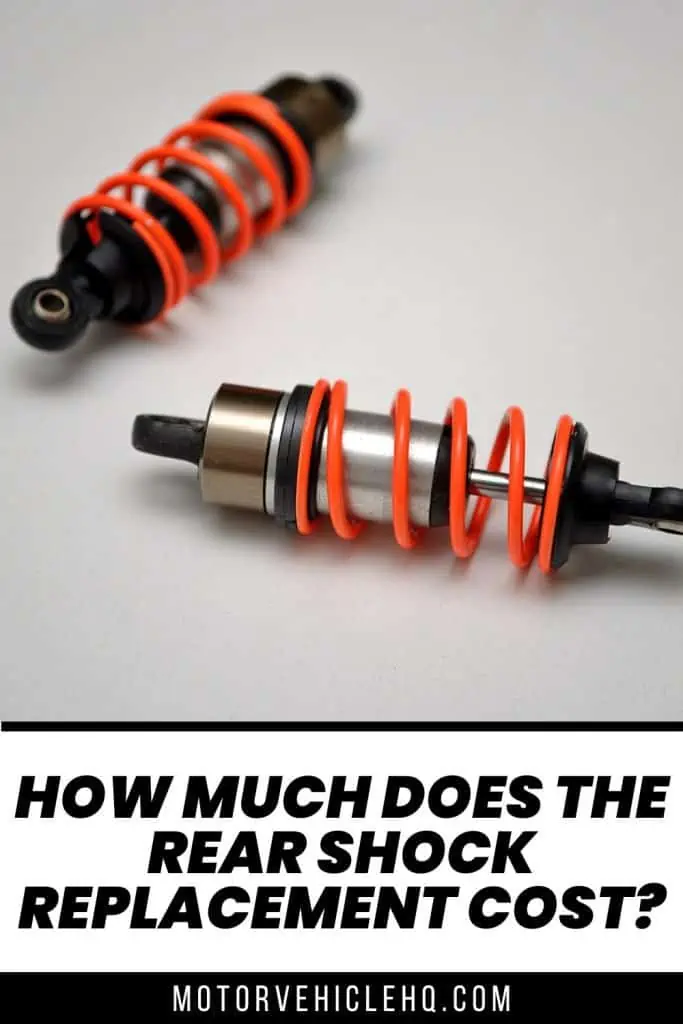
Miniature oil-filled Coilover shock components for scale cars by Avsar Aras / CC BY-SA 3.0.

Jim Wicks is the founder of MotorVehicleHQ. With over two decades of experience in the automotive industry and a degree in Automotive Technology, Jim is a certified car expert who has worked in various roles ranging from a mechanic, car dealership manager, to a racing car driver. He has owned more than 20 cars over the past 15 years. Ask him about any vehicle you see on the road and he can tell you the make, model and year. He loves the aesthetics of all things cars, and keeps his vehicles in pristine condition.
In his free time, Jim enjoys getting his hands dirty under the hood of a classic car or taking long drives along the country roads. His favorite car? A 1967 Shelby GT500, a true classic that, according to Jim, “represents the pure essence of American muscle.”
